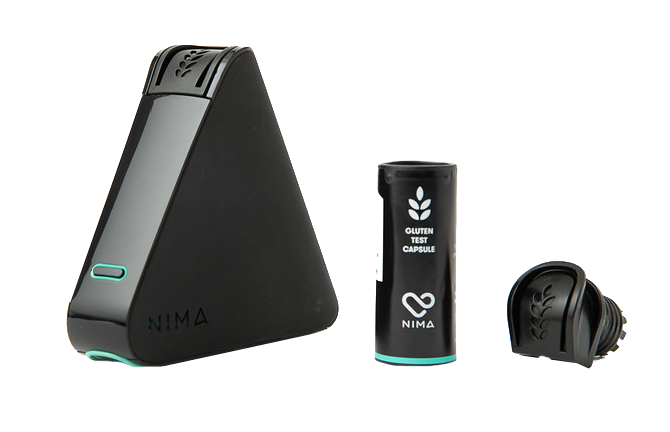Allergen Testing of Food Products: On-site, In the Lab, and At Home
With Halloween just around the corner & candy sales nearly back to pre-covid levels, food allergens may be on a lot of people’s minds. Whether a parent of a child with food allergies, a fan of the holiday planning to hand out goodies to trick-or-treaters, or just someone who likes to buy discounted candy to eat on November 1st, you most likely have at some point noticed the prominent allergen labelling on some types of Halloween candy. You also may have noticed an increase in food allergen labelling over the past few decades, and this is not simply because regulations have become more stringent.
Globally, the incidence of food allergies is on the rise, going from around 3% of the population in the 1960s to around 7% as of 2018. In the US alone it is estimated that around 32 million people have food allergies, with almost 90% of these allergies caused by the following eight foods:
- Peanuts
- Milk
- Wheat
- Soy
- Eggs
- Tree nuts (including almonds, walnuts, pecans, and cashews)
- Fish
- Shellfish
Food allergies can cause deadly anaphylactic reactions to even minute quantities of allergen, making accurate and reliable testing for the presence of allergens in food products an issue of the utmost importance.
Food Allergen Testing: The Basics
Allergen testing detects allergenic proteins in food products at multiple points along the production process. Once a product has come in contact with an allergen there is no easy way to completely remove the contaminant, so careful allergen control must be practiced at each stage of production, from processing of raw materials through to packaging. Regular testing throughout the supply chain helps to catch any contamination at the source and prevent the need to discard or recall large batches of product. Testing can either be qualitative, indicating presence or absence of the allergen, or quantitative, indicating the precise levels of allergen present in a tested sample. The type of testing required depends on the intent of the end product. For example, to be labelled gluten-free in the US the FDA requires foods to contain less than 20 ppm of gluten.
Many countries, including the US, Canada, Australia, and the EU, follow the standards set out by the Food and Agriculture Organization of the United Nations (FAO) in the Codex Alimentarius, but each country has its own allergen priorities. The US does not include sulphites on their list where many other countries do, Canada includes sesame and mustard as allergens of concern, and the EU brings the list up to fourteen foods by also including molluscs, celery, and lupin. As such, food allergen labelling requirements differ greatly from country to country, so it is important to make sure your product is being tested and labelled for each country it will be sold in.
Allergen Testing On-site & In the Lab
The most common form of allergen testing is the popular ELISA (enzyme-linked immunosorbent assay) method. Providing accurate quantitative results, ELISAs are relatively easy to perform and do not require overly complex lab equipment as they can be read by UV/Vis spectrophotometers and microplate readers. Many companies, such as 3M, offer a wide variety of ELISA kits for protein based allergen testing, covering all of the FAO allergens of concern and more. The fine scale quantitative results provided by ELISAs make them exceptionally well suited for testing in a situation where a product needs to be certified as completely free from a certain allergen.

There are, however, a number of drawbacks to using ELISA as your only allergen detection method, including the 24 hour results time and only being able to test for one type of allergen per assay. For faster results, many products rely on lateral-low techniques, also referred to as immunochromatographic assays. These tests most frequently come in test strip or dipstick form and are able to quickly provide qualitative results for the desired allergen. Lateral-flow tests, like the SENSIStrip line from Eurofins, are very simple to use and can be performed effectively with minimal training. Due to their ease of use and lack of quantitative abilities, lateral-flow tests are frequently used to verify cleaning and sterilization procedures.
Another drawback of ELISA for allergen detection is its reliance on proteins, which is problematic in cooked or highly processed foods where proteins are denatured or no longer intact. In this case, PCR can be used to test for the DNA of the allergen in question, as DNA generally remains intact after being exposed to cooking temperatures. PCR tests can also be used to detect the presence of multiple allergens simultaneously. However, PCR can generally only provide qualitative results, and it cannot be used to detect allergenic substances that don’t contain DNA—such as oil, milk, and egg whites—or to differentiate between substances that share the same DNA—such as eggs and chicken.
Mass spectrometry (MS) can also be used quite effectively to detect allergenic substances in food. In fact, MS based allergen testing is looking like the future of the industry, with many companies now showcasing a variety of MS based testing solutions. SCIEX offers powerful allergen screening methods using LC-MS (liquid chromatography mass spectrometry) to analyze multiple allergens simultaneously in a range of food products, from raw ingredients to baked goods. Waters also has a range of LC-MS based allergen testing products as well as numerous application notes exploring their use, including using LC-QTofMS to detect novel low abundance allergenic proteins.
Mass spectrometry based allergen testing detects peptides as a opposed to intact proteins. These short chains of amino acids that make up proteins are not affected by processing, meaning that MS protocols can be equally effective at all stages of the supply chain. MS based detection also allows for products to be tested for multiple allergens simultaneously. However, sample preparation and analysis with MS is time consuming and requires specialized lab equipment.
The Rise of At-Home Food Allergen Testing Kits
The global rise in food allergy prevalence has also been accompanied by an increase in the types of foods that cause these allergies. With more people allergic to a wider variety of foods, and not every product being labelled for every possible allergen, it makes sense that some would turn to at-home testing solutions. Some companies that make allergen tests designed for labs and the production floor also supply relatively simple at-home tests to consumers, such as the EZ-Gluten line by ELISA Technologies.
 One company, called NIMA, has developed a small battery-powered device that will perform antibody detection tests on pea-sized samples of food within 3 minutes. Their proprietary technology functions as a mini all-in-one lab that can test any type of food for either gluten or peanuts. Users simply insert a sample of the food they want to test along with the corresponding capsule, twist the cap to simultaneously grind the sample and break open the capsule, and wait for the device to display clear and simple results on the presence or absence of the allergen. This technology has allowed many people with severe allergies to comfortably eat out at restaurants, and it also has a linked database where users can contribute to an expanding list of packaged foods that have tested safe (or not).
One company, called NIMA, has developed a small battery-powered device that will perform antibody detection tests on pea-sized samples of food within 3 minutes. Their proprietary technology functions as a mini all-in-one lab that can test any type of food for either gluten or peanuts. Users simply insert a sample of the food they want to test along with the corresponding capsule, twist the cap to simultaneously grind the sample and break open the capsule, and wait for the device to display clear and simple results on the presence or absence of the allergen. This technology has allowed many people with severe allergies to comfortably eat out at restaurants, and it also has a linked database where users can contribute to an expanding list of packaged foods that have tested safe (or not).
It is important to note that at home solutions are not as accurate as comprehensive as the testing that can be performed during food production via ELISA or LC-MS, primarily due to the fact that at home test kits can only test a small sample of food and cannot account for cross-contamination that could affect a different portion of the dish in question. For more thorough screening of foods for allergen contamination, service dogs can be trained to detect minute qualities of things like gluten and nuts through scent, but such highly trained dogs are both expensive and difficult to certify, so they are not a reasonable solution for most people.
With the wide variety of testing options available, you should carefully consider the requirements of your set up, as well as any time or equipment limitations you may have. ELISA, PCR, lateral-flow, and LC-MS allergen testing each have their own sets of benefits and drawbacks, and which process is best for you will depend on your needs. Regardless of the testing method used, you can rest assured that the allergen labels on your Halloween candy are accurate. And if you need to test for an uncommon allergen, there are a number of at-home options available so you (or your kids) can trick-or-treat with peace of mind.
Visit the LabX Food Testing Equipment application page for further insight and product listings.










